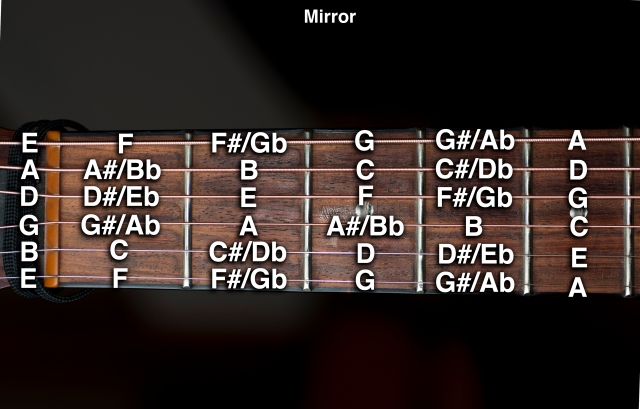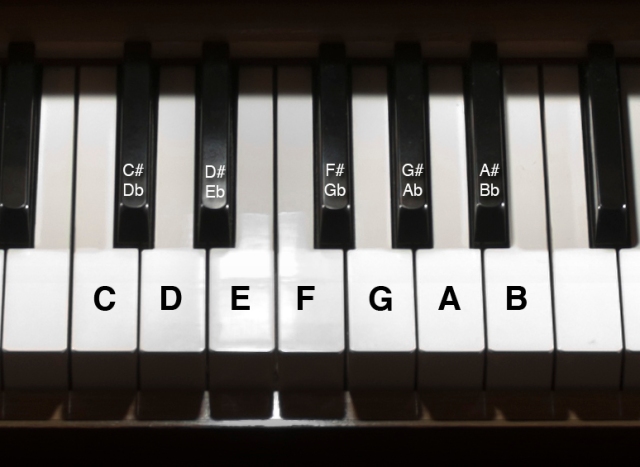“There were twelve stones according to the names of the sons of Israel; according to their names, engraved like a signet, each one with its own name according to the twelve tribes.” -Exodus 39:14
Just as the twelve tribes have names, each of our twelve notes have names.
The names of the 12 distinct pitches are displayed here on piano keys:
The names of the notes on their respective guitar strings are shown here:
(Shown are the first 5 frets, mirrored for convenience. If you prefer a diagram from the perspective of looking down at the guitar, click here: Layflat Fretboard. Let me know: which one is more helpful? To see a map of the whole guitar, click here: Full Fretboard Map )
To help with your music reading skills, it is best to be really familiar with you instrument. Strive to know how to play any single note on demand. This may be most difficult for guitar players – as you can see in the two images above, the guitar map is so much more complicated, and has no “black key landmarks”. Quiz yourself on being able to play single notes on demand, or ask friends or family members to just yell out letters A – G randomly while you practice.
Pitch
We learned last week that pitch is the frequency of the audible sound wave, and that pitch is represented by the vertical placement on a 5-lined staff. Today we will see what the ranges of each instrument look like on the grand staff of printed music. The grand staff is simply the treble clef:
and the bass clef:
Stitched together to make the grand staff:
The guitar range on the grand staff looks like this:
*in standard tuning on a standard 6-string guitar- longer necked guitars may play higher.
The piano range on the grand staff looks like this:
Our note reading turns to the bass clef this week. We will be learning B, C and D in the bass clef.
Here are your practice worksheets:
Rhythm
This week, we will be practicing on our instruments the durations we learned last week. Here are the 4 durations we will use:
Tap out these rhythms on your instrument, or any percussion instrument of your choice. Feel free to use chimes, drums, pots, pans (with Mom’s permission), sticks, pencils, or pretty much anything that makes noise. Practice each line by itself as a separate exercise. For a challenge, try the playing whole thing through as one piece. I recommend that you tap out four beats before you start practicing each line to set the tempo.
Here is one of the sample rhythm lines:
Thank you all for reading this week. Please email me or comment with any questions.
Enjoy the music,
Karina






As always, thank you!!
good
James, of Texas Great Job and many thanks